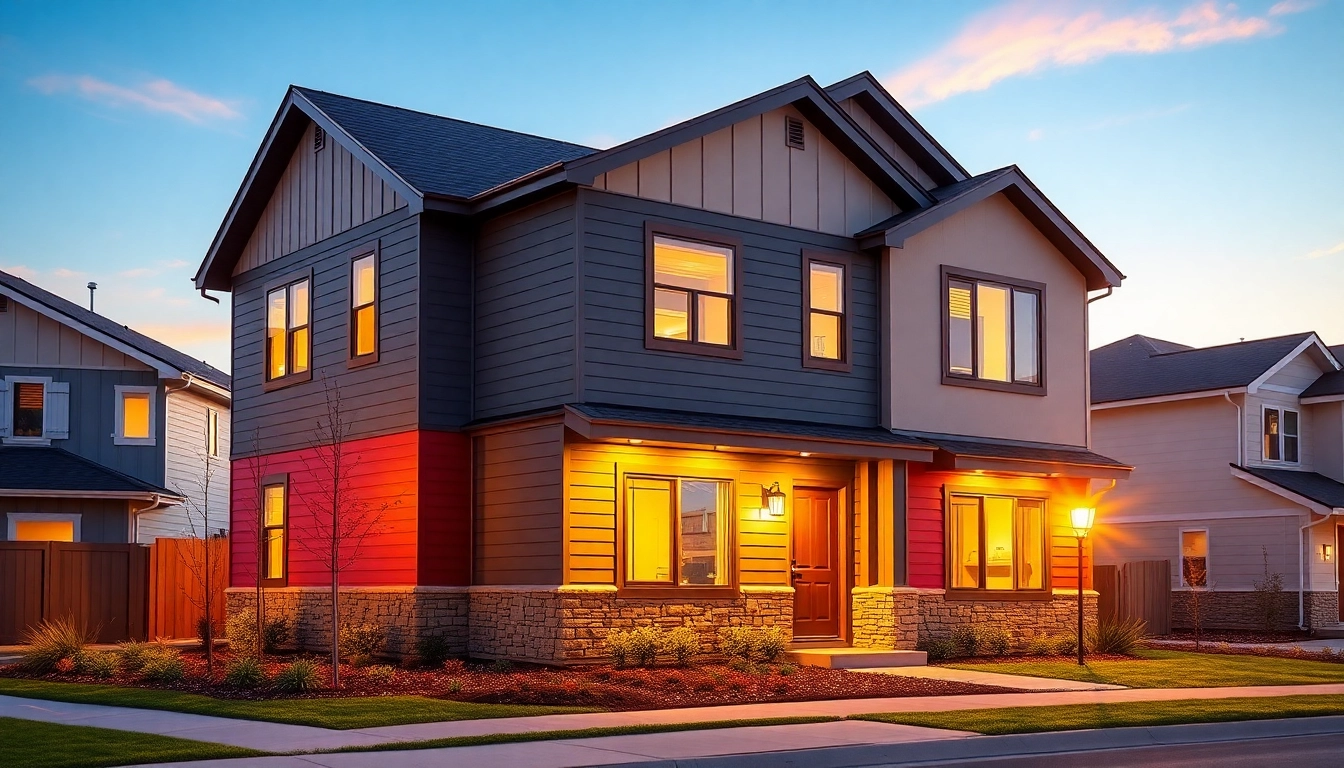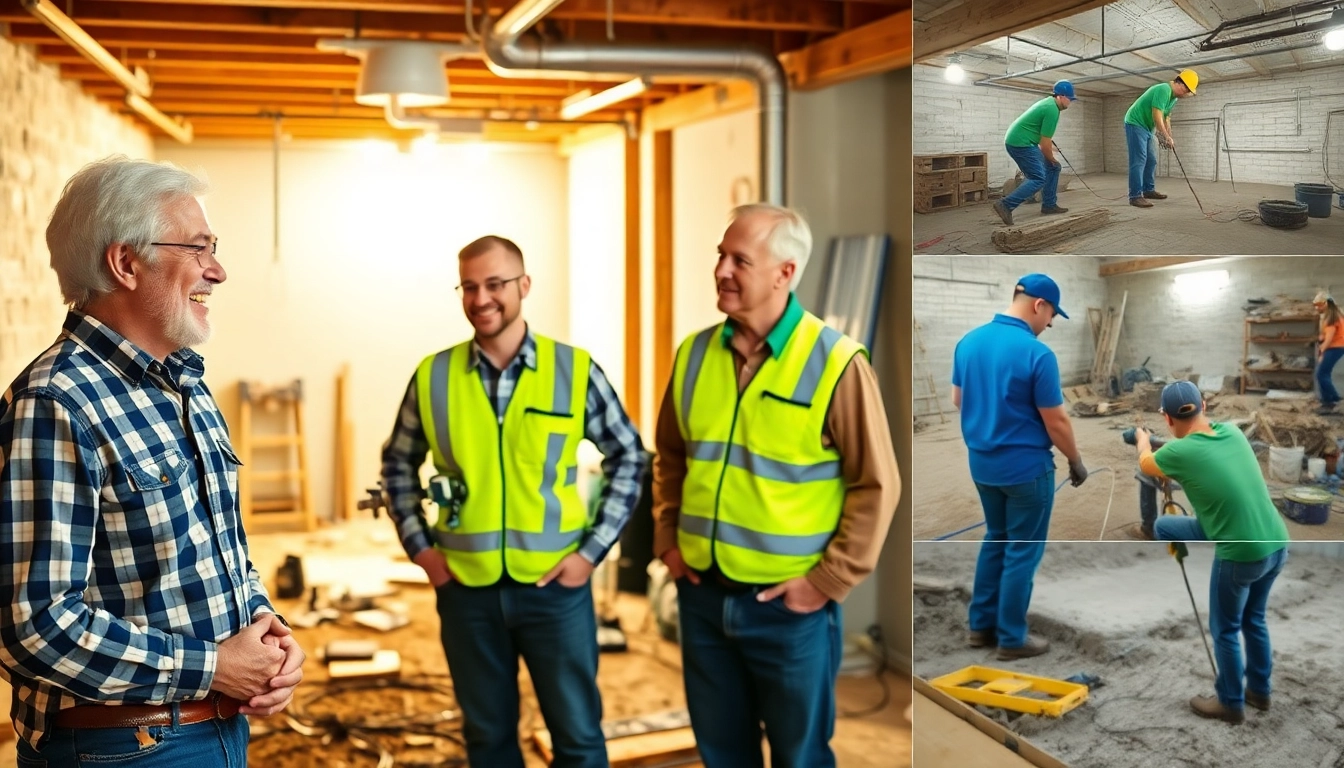Understanding the Need for an Electrical Panel Upgrade
When it comes to maintaining the safety and efficiency of your home’s electrical system, understanding when to opt for an Electrical Panel Upgrade is paramount. As our reliance on electricity grows, the demands placed on our electrical panels can exceed their capacity. Identifying the signs that indicate a necessary upgrade ensures that your home remains safe, compliant with codes, and capable of supporting your modern lifestyle.
Signs You May Need an Electrical Panel Upgrade
One of the most noticeable indicators that an upgrade is needed is the experience of blown fuses or tripped breakers. If you frequently encounter issues, it may indicate that your current panel cannot handle the load required by your appliances and devices. Additionally, flickering lights, especially when running multiple devices, can also signal that your panel is struggling.
Other signs include:
- Increased electricity bills without a clear reason, suggesting inefficiency.
- Electrical burns or the smell of burning plastic near the service panel.
- Home renovations that require additional circuits or outlets beyond your panel’s current capacity.
- Older homes with 60-amp panels, which are often insufficient for modern needs.
Evaluating Your Current System’s Capacity
Regularly reviewing the capacity of your electrical panel is crucial, particularly in homes with outdated systems. Understanding your panel’s amperage rating—typically 60, 100, or 200 amps—helps in assessing whether it can adequately cater to your needs. Homes equipped with older panels may lack the capacity to support modern appliances such as electric vehicles, high-consumption kitchens, and home offices.
If your electrical panel is outdated or exceeds the recommended capacity for your lifestyle, you should consider an upgrade to enhance your home’s electrical system.
Importance of Safety and Code Compliance
Upgrading your electrical panel also aligns your home with local and national safety codes. Many codes are updated regularly, reflecting the latest safety standards. Non-compliance can result in fines and increased risk of electrical fires. An electrical panel that does not meet stringent code requirements can become a liability.
Prioritizing safety not only protects your family but also increases your home’s value. When potential buyers evaluate your home, a safe, up-to-date electrical system often reflects overall property maintenance and care.
Benefits of an Electrical Panel Upgrade
Transitioning to a new electrical panel can offer several benefits that extend beyond simply having the latest technology. Understanding these advantages can help justify the investment.
Increased Electrical Capacity for Modern Needs
With the rise of smart homes and the increased use of electronics, many households now have a combined electrical demand that far exceeds what older panels can handle. Upgrading to a higher amperage panel—typically 200 amps—allows for an increased number of circuits and more reliable access to electricity for all household needs.
This increased capacity is especially essential for homes that have added energy-intensive appliances, such as heat pumps, multiple refrigerators, or electric vehicle chargers. Upgrading ensures that your system can support these demands without false alarms from breakers tripping or fuses blowing.
Enhanced Safety Features and Reliability
Newer electrical panels incorporate improved safety features, such as circuit breakers that protect against overloads and short circuits. This helps to significantly reduce the risk of electrical fires. Modern panels also use better materials that are less prone to deterioration over time, thereby enhancing the reliability of your electrical system.
An upgrade also paves the way for modern safety inspections and compliance, ensuring that your family and property are shielded from potential electrical hazards.
Long-term Cost Savings and Efficiency
Although the upfront costs of an electrical panel upgrade may be substantial, the long-term savings often outweigh these initial expenses. An upgraded panel can lead to improved energy efficiency, resulting in lower electricity bills. Furthermore, new panels typically reduce energy waste, resulting in more efficient power distribution.
Over time, you may also experience reduced repair and maintenance costs; modern systems require less frequent servicing compared to older ones that may be prone to deteriorating over time.
The Electrical Panel Upgrade Process Explained
Understanding the upgrade process is crucial for a smooth transition. Below are the key steps involved in upgrading your electrical panel.
Assessing Your Upgrading Options
The first step involves assessing your household’s electrical needs. This includes evaluating how many appliances you use, considering any planned renovations, and determining your long-term energy needs. Discussing these requirements with a qualified electrician can help you determine what type of upgrade is most suitable.
You may choose between different panel types depending on your electrical usage. Higher amperage panels are ideal for homes with substantial electrical needs. Additionally, consider panels that provide space for additional circuits to accommodate future expansion.
Choosing the Right Panel and Components
Selecting the right panel involves researching reputable manufacturers and models. It’s essential to factor in warranties, safety features, and the availability of local parts. Factor in compatibility with smart home systems or renewable energy solutions, such as solar panel installations—making these considerations can future-proof your electrical system.
Components such as circuit breakers, main switches, and grounding systems should also be evaluated. Depending on your needs, you may wish to install additional safety features, such as surge protection devices or GFCI outlets, during the upgrade.
Permits, Inspections, and Professional Help
Upgrading an electrical panel usually requires obtaining permits from your local government. This not only ensures the work meets safety codes but also protects you legally. Hiring a licensed electrician for the installation is a worthwhile investment. Their expertise can save you time, ensure safety compliance, and prevent costly mistakes that can arise from DIY attempts.
After installation, be sure to arrange for inspections to confirm that everything is functioning correctly and safely. This can provide peace of mind that your upgraded electrical panel meets all required codes.
Cost Factors Associated with an Electrical Panel Upgrade
Understanding the costs associated with upgrading can help in planning your budget effectively.
Average Costs and Financial Considerations
The cost associated with an electrical panel upgrade varies based on the complexity of the upgrade, the type of panel selected, and regional labor rates. On average, the cost can range from $1,500 to $3,000. However, significant renovations may escalate these costs to upwards of $5,000.
Before proceeding, obtaining multiple estimates can help you gauge the market rate within your locality. This will not only assist in budgeting but also allow you to identify any potential red flags in pricing.
Understanding Installation Fees and Labor Costs
Labor costs can significantly impact total expenses. Established electricians may charge between $50 and $120 per hour, and installations usually require a number of hours—make sure to ask for an estimate of the total labor required.
In addition to labor, materials can also contribute to costs. New panels range in price, and options can sometimes include service entrance cables and other needed components. Discuss these aspects during your consultations to gain a comprehensive understanding of potential expenses.
Available Rebates and Incentives for Upgrades
Some local utilities and government programs offer rebates and incentives to encourage energy-efficient upgrades, including electrical panel enhancements. These programs can help offset costs, making upgrades more affordable. Research what financial assistance is available in your region, as this can significantly affect your overall investment.
Maximizing the Benefits of Your Electrical Panel Upgrade
After upgrading your electrical panel, it’s essential to maintain its performance and integrate modern technologies for optimal results.
Routine Maintenance and Inspections
Regular maintenance of your electrical panel is crucial. Schedule inspections every few years to ensure that connections remain secure and free of corrosion or degradation. In particular, check for any damaged or fraying wires, and ensure that circuit breakers function correctly.
Keeping a routine schedule can help identify issues before they escalate into more significant problems. Additionally, consider maintaining a log of inspections and repairs for future reference.
Integrating Smart Technologies
One of the benefits of an upgraded electrical panel is the opportunity to integrate smart technologies. Smart panels allow for greater control of your household’s energy use through apps that can track consumption patterns, identify abnormalities, and even schedule the use of high-consumption devices.
Such technologies can ultimately lead to increased efficiency, saving you both time and money. Additionally, they can improve household comfort and convenience, allowing better management of energy demands.
Future-Proofing Your Electrical System
An electrical panel upgrade is not just about current needs—it’s also about anticipating future demands. Anticipating potential developments in your home can ensure that your electrical panel can manage subsequent renovations, new appliances, or increased electric vehicle usage as technology evolves.
Consider discussing your long-term plans with your electrician during your upgrade process to ensure your upgraded panel aligns with these. Designing for future expansion can protect your investment and extend the lifespan of your electrical system.



